Gun Cleaning Product Tests
In an effort to cut through some of the hype
about gun cleaning products, the following information is presented for your
enlightenment and enjoyment.
Fr. Frog's Rule of
Chemicals: There are no magic cleaners nor lubricants.
That rule just about sums
things up. No manufacturer with any brains would deliberately market a
product that didn't work. The composition of barrel fouling and firearms
"crud" is well known and there are lots of chemicals out there that will dissolve
and/or remove them. Some might work a little better for certain types of fouling or
under different conditions than others, but they all can do the job. As
with a lot of things, folks tend to idolize whatever it is they are using
and to swear by Shinola 5000, because that's what they have while their buddy
across the street swears that Mother's Magic Stuff keeps his guns running.
On my "There
Ought to
be a Law" page one of the things I bemoan is the plethora of variations of
tooth pastes, shampoos, etc, that flood the market. Same with "gun
chemicals." The reason for all the variations is, as Jeff Cooper use to
say, "Why to sell you silly goose!" Everyone wants a cut of the
pie and everyone who comes up with a "new" idea or two wants to market
them, and thus all the gun cleaners, oils, and greases. Many of them are simply commercial
products for other uses repackaged for the firearms trade.
Interestingly, while a couple of companies have seen this page and have emailed
me and claimed to have some
"super" cleaner that was vastly better than everything else, only
two have ever
sent a sample for unbiased comparison testing and while they worked very well they
were nothing magical.
A lot of products are now packaged in
aerosol cans which make them a bit easier to apply but in my opinion there is a
lot of waste due to overspray and with the exception of degreasers I personally
prefer regular liquids for most purposes.
I use to have a statement here that if you have a favorite
cleaner or a product not tested here I'd be glad to test it. However, in
the couple of years I've been doing that I haven't found a truly bad product so I no
longer will do any further testing.
When it comes right down to
it, I have not seen any product that I wouldn't use to maintain my firearms--but
some work (a little) better for my purposes than others.
In the end, what matters
the most is simply keeping your firearms clean. No matter what you use you'll
also need to use a little of the only known miracle cleaner, "elbow
grease." Use the product you like or have on hand, follow good
procedures, and let the ad copywriters battle it out--while you enjoy your clean
firearms. While having an National Stock Number/NATO # is no guarantee
of any particular performance, items with such designations have at least met
military "standards" for performance and I tend to look with favor on
such products, but not to
any great extent. It is interesting that every manufacturer who has had
someone in the military use their products claims "used by the
military" as if to imply the product is a standard stocked and issued item
Lubricants (Or sliding down the slippery slope of truth vs.
fiction)
It has also been suggested that I test lubricants, but after
some thought and a discussion with a friend in the lubrication business I have decided not to do so.
Every day some new "wonder lube" appears on the market (most with ever
increasing prices) and folks spend vast sums and run to it with expectations of
fame and fortune and better shooting. In addition, there are frequently
conflicting "specs" given as to the temperature range of the
products.
I have yet to find any gun lube company that openly publishes the
full battery of ASTM lubrication tests and temperature data.
However, in reality "laboratory" tests have
little relationship to real world use on firearms as
the loading and shear forces are not like automotive or aircraft engines, and in
fact most modern lubricants could probably be considered overkill in firearms.
There
is a test of gun oils on the Internet that involved a
rotating shaft and a lubricated, load bearing piece that rubbed against the
shaft until things seized up. Interestingly, a very popular and
widely recommended firearm lubricant was among the poorest performers
in this test. To be blunt,
I've been shooting for over 75 years and I have never had, nor have I heard of,
or encountered,
a failure of a firearm that could in any way be attributed to the lubricant used
(although I have seen many due to a lack of lubricant.) . While some claim the "their" lube will work in the
cold of outer space or inside the heat of a fusion reactor, in real life it
doesn't matter. However, some folks get their hackles up if you criticize their lube
choice.
As with many gun cleaners, lubricants offered for
gun use are repackaged commercial products--with most simply being various
synthetic lubricants with anti-wear additives originally designed for other
applications like the food industry. I
know for a fact that one popular gun oil is/was simply repackaged Castrol synthetic
motor oil--their 5W20 grade I believe--at $7.95 for 2 ounces. In my opinion,
the sole
advantage to the commercially packaged stuff is the convenience
factor. You get the product in an easy to use, small container rather than
a quart bottle and that can be worth while. Some lubricants may be a little
better than others for some
specific critical tasks but when it comes to use on firearms there is, in fact,
very little meaningful difference between the plethora of "gun oils."
As with cleaners, having an National Stock Number/NATO # is no guarantee
of any particular performance, but items with such designations have at least met
military "standards" for performance and I tend to look with favor on
such products, but not to
any great extent.
My recommendation is to use what lubricant you have at hand, properly
apply it, and apply it to the right
places. ATF fluid, motor oils, medical
lubricants, or what ever will work just fine. Note: You will get the best results with
modern synthetic lubricants by completely cleaning all old lubricants off of the metal and
then rubbing in several coats of the new lubricant before applying the final
amount. Warming the surfaces first helps.
For extreme cold weather you can use the synthetic motor oils and ATF
if you are running auto lubricants.
They stay fluid and lubricate down to the -40 to -50 range. If you need to go
lower than that you'll probably freeze up before your lubricant will. (That's
when you can in an air strike!)
If you are an AR shooter you've probably heard horror stories
about hot ARs.
A lot of hype makes a big deal of how hot a direct
impingement gun can get, with subsequent warnings of always using "brand
X" lube. There have been some stories about M4 carbines getting so
hot from sustained firing during a long firefight that they seized up.
What happened was that they were fired well past their designed limits (45
rounds per minute in semiautomatic; 90 rounds per minute burst or full auto,
with a sustained rate of fire (continuous) of 12 - 15 rounds per minute.
This problem would have also occurred with the full sized rifle, as well as
other arms under these conditions too. However, those weapons were being
used under conditions of fire that practically never happen even in combat and
most likely will never happen in the civilian world. In a test of 60
rounds in about a minute the bolt carrier temperature rose to about 120° from
an ambient temperature of 82° while the muzzle temperature was about 285° and
the gas tube rose to about 360°. Following with another 60 rounds at the same
cadence the temperatures rose to about 150° and 400°. However the gas tube
rose to over 460°.
These were extreme condition, not likely to be encountered
in the real world. If your lube can handle temperatures in the mid 400s you
should never have to worry, unless you are facing the zombie hoards, and then
you'll have other problems..
Go
shoot and don't loose sleep over whether or not you are using the latest "wunderlube."
If you like the various automotive oils you can get plastic
dispenser bottles in 4 oz (100 ml) and smaller sizes from numerous sources
locally ( I've gotten some nice ones from our Vet), or online at places such as
www.candlechem.com/bottles.htm
(Nice selection of small squeeze bottles)
www.dharmatrading.com/html/eng/3393-aa.shtml
www.midwestbottles.com/index.php?p=catalog&parent=5&pg=1
Brownells also offers squeeze bottles with needle tips
1/2 oz 3-pak needle oiler - #084000361
1 oz 3-pak needle oiler - #084000127
Recently, a company that sells a lubricant called "FrogLube"
sent me some samples just because of the name relationship. (Maybe they
heard my joints squeaking.) It is a light green colored (what other color could
a Frog lube be???) synthetic food grade lubricant that is listed as a cleaner, lubricant,
preservative. It is quite slippery and has a nice very faint minty scent
but it tended to be gummy..
Just as a point of interest below is a table of some common
firearms oils and their low and high temperature limits which are based on
either their publish specs or on their pour point (plus 10 degrees), and their flash point
(minus 10 degrees) specifications as of when this page was first done..
(Not) Surprisingly, as previously mentioned no firearms lube manufacturers publish the full
ASTM lubrication test panel of tests for their product.
| Oil properties |
|
Product |
Low Temp |
High Temp |
| SLIP Gunlube (actually a CLP) |
-85 |
1250 |
| SLIP EWL |
-85 |
1250 |
| SLIP EWL30 |
-75 |
1250 |
| SLIP EWG Grease |
-65 |
750 |
| TW25B Grease |
-85 |
450 |
| MC2500 (TW25 oil) |
-85 |
450 |
| MPro 7 LPX (actually a CLP) |
-85 |
460 |
| FP10 |
-50 |
290 |
| Weapon Shield |
-65 |
500 |
| Miltech 1 |
-45 |
450 |
| Mobil 1 0-50 |
-65 |
425 |
| Mobil 1 5-30 |
-40 |
445 |
| Mobil 1 5-20 |
-40 |
445 |
| Mobil 1 10-30 |
-38 |
450 |
| Mobil 1 10-40 MX4T |
-65 |
480 |
| Mobil 1 20-50 |
-60 |
530 |
| Mobil 1 Syn ATF |
-60 |
430 |
| Amsoil 10-40 |
-50 |
450 |
| XF7 Grease |
nd |
500(est) |
| Froglube |
nd (-35 est)* |
nd 400 (est) |
nd = no data available
* - Numerous reports of it solidifying at about (+)35 deg |
The Cleaner Tests
The solvents advertised as "cleaners" that were tested included:
Accubore, Barnes CR-10, BreakFree CLP,
Butch's Bore Shine, Ed's Red (a home brew), Hoppes #9 (current formula), generic brand household
(3%) ammonia, generic brand janitor's strength (10%) ammonia, KG12, Kroil, Marksman's Choice MC-7, Marksman's Choice Copper Solvent,
M-Pro 7, M-Pro 7 Copper Remover, ProTech, Sweets 7.62, and Sam & Dave's #1.. These tests were done in 4 parts parts. A copper
solvent test, a copper fouling test, a carbon removing test, and a rust test
test. While the test conditions may not perfectly simulate a dirty rifle
bore they are standardized and repeatable and I believe the results provide a
valid comparison of the various products. I addition, I've used all of
these products to clean "real-world" firearms and the results match
the findings of these tests. While not all are good for removing heavy copper
fouling, all of them work well as a general gun and bore cleaner.
The Results
Normal Bore Cleaning - All of the products tested did an
excellent job of removing normal barrel crud and fouling and were so close in performance
that no listing is necessary.
The big factor in the use of any cleaner is to ensure
that the bore is thoroughly soaked with the cleaner or results
won't be very good.
Copper Removal Test - This test was done to ascertain
whether a given cleaner dissolved copper. It was conducted using a piece
1/4 " copper tubing and patches moistened with equal amounts of each
solvent. Starting with a clean piece of tubing a wetted patch was wrapped
around the copper tube and was allowed to sit on the tube for 2 minutes.
The patch was then rotated around the tube several times, removed, and allowed to
air dry. The patch was examine for a "greenish," "bluish,
or "brownish"" residue which
indicates copper removal.
| Copper
Solvent Test |
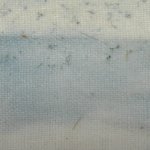 |
 |
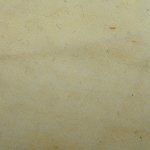 |
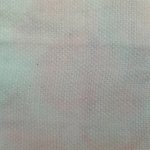 |
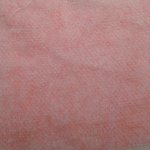 |
| Accubore |
Barnes CR-10 |
BreakFree CLP
The tan color is the result of the color of the solution |
Butch's Bore
Shine |
Ed's Red |
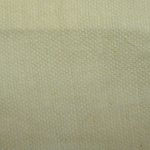 |
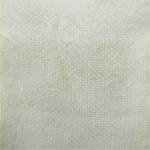 |
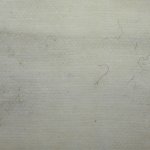 |
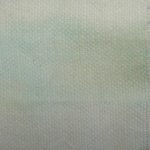 |
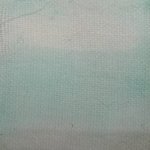 |
Hoppes #9
The tan color is the result of the color of the solution |
KG12
(Note faint tan stripe in center. The copper test piece was actually
etched) |
Kroil |
Marksman's Choice
MC-7 |
Marksman's Choice
Copper Solvent |
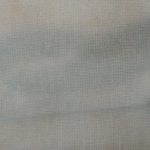 |
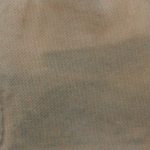 |
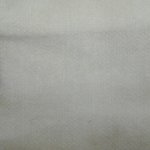 |
 |
 |
| M-Pro
7 Cleaner |
M-Pro
7 Copper Remover
(Orange color is from the solution) |
ProTech |
Sweets 7.62 |
10% Janitor's
Ammonia |
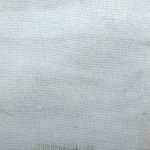 |
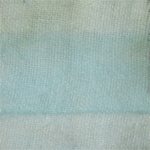 |
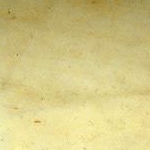 |
picture coming |
 |
| Household Ammonia
(3%) after 15 minutes |
Ammonia / Ivory
Mix |
Master's
Bore Cleaner
The tan color is the result of the color of the solution |
Sam
& Dave's #1 |
Unused patch |
In the interest of completeness the household ammonia wetted patch showed no
discoloration after 2 minutes. Since ammonia is THE easy to obtain copper solvent the
patch was left in contact for additional time and examined after every
minute. At about 15 minutes the patch had developed a uniform very light
blue--barely noticeable--discoloration. The ammonia / Ivory mix is 2 parts
10% ammonia, 1 part sudsy household ammonia, 1 part Ivory liquid dish
soap.
KG12 is a non-ammonia based copper remover (using, I believe, organic acids,
amines, and hydrocarbon citrus distillates as is M-Pro7 Copper Remover).
KG 12 from a company called KG Industries,
LLC (www.kgcoatings.com) was designed for cleaning artillery
pieces. They are the
first product I've seen described as "non-ammonia based" that actually
seem to
work well. While they do not show "green" on the patch (I was
advised that any discoloration would be tanish) and does not show a very dark stain on the
patch, they definitely etched and dulled the surface of the test piece of polished copper tubing so
they are attacking the copper. These products would be a good ones for folks who have
"ammoniaphobia." The KG company did an interesting "test"
where bullets were soaked in various commercial products and the KG12 definitely
eats copper. While this may not accurately portray bore cleaning abilities
of other products because bores are scrubbed too, it does show that this product aggressively
attacks copper. It quickly and completely cleaned a friend's very badly
copper fouled Garand, and the barrel of an UZI. M-Pro 7 Copper Remover is
similar but doesn't seem to be as aggressive in its action in my testing but it
is a thicker mixture which seems to cling to the bore better. Both are superior
products and I recommend either of them.
All samples shown were photographed under identical
lighting conditions and a clean unused patch is shown for reference.
Copper Fouling Test - This test was done to see if a
given cleaner removed copper fouling without necessarily dissolving it. It was conducted with a
clean and grease free piece of steel with a slightly textured finish which was
exposed to a rotating piece of copper with approximately 10 pounds of pressures
to generate a steak of copper on the surface of the steel. The copper
smear was then rubbed vigorously with patches wetted with an equal amount of
solvent and allowed to stand for 5 minutes. The sample was then rubbed
briskly with another solvent wetted patch until the copper smear began to come
off the metal onto the patch or 5 minutes elapsed, whichever came first. This test did
not photograph well as the copper smears were faint and the amount of fouling
removed was slight (small particles coming off or slight patch discoloration) so the results are tabulated
instead by observed appearance.
|
Copper Fouling Test |
| Product |
Fouling Removal |
|
Product |
Fouling Removal |
| Accubore |
Slight |
Kroil |
None |
| Barnes CR-10 |
Moderate |
Marksman's Choice
MC-7 |
Slight |
| BreakFree CLP |
None |
Marksman's Choice
Copper Solvent |
Moderate |
| Butch's Bore
Shine |
Very Slight |
M-Pro 7 |
Slight |
| Ed's Red |
Very Slight |
M-Pro 7 Copper Remover |
High |
| Hoppes #9 |
None |
Pro Tech |
None |
| Household Ammonia |
None |
Sweets 7.62 |
Moderate |
| 10% Janitor's Ammonia |
Moderate to high |
|
KG12 |
High |
| Master's Bore Cleaner |
Slight |
|
Sam & Dave's #1 |
Slight to
moderate |
After-rust Test - Using the sample strip from the above
test the sample was allowed to remain exposed to air.
|
Rust/Corrosion Test |
| Product |
Corrosion Level |
|
Product |
Corrosion Level |
| Accubore |
None |
Kroil |
None |
| Barnes CR-10 |
None |
Marksman's Choice
MC-7 |
None |
| BreakFree CLP |
None |
Marksman's Choice
Copper Solvent |
None |
| Butch's Bore
Shine |
None |
M-Pro 7 |
None |
| Ed's Red |
None |
M-Pro 7 Copper Remover |
None |
| Hoppes #9 |
None |
Pro Tech |
None |
| Household Ammonia* |
Very slight rust |
Sweets 7.62 |
None |
| 10% ammonia* |
Very slight rust |
|
KG12 |
None |
| Master's Bore Cleaner |
None |
|
Sam & Dave's #1 |
None |
*
- These are straight water based solutions which probably contributed to the
slight rust.
Test Conditions - 48 hours exposed to air at 45-52 percent humidity at
temperatures varying between 67 and 80 degrees
To further investigate reports of "damage" (so far unsubstantiated
as far as I can tell) due to leaving ammonia based solvents in the bore too long
I repeated the after-rust test but use a polished sample to see if any
surface etching occurs. None of the solutions except the straight ammonia dilutions
showed any visible signs of etching due to after rust. It is my opinion that claims of bore
damage were based upon the fact the the bore was initially rough an the extended
use of copper removal solvents simple exposed the original rough bore.
Besides after using a copper remover you should clean the bore normally.
It has been reported to me by several correspondents that if there is any rust
in the bore that ammonia based products can cause additional rusting (but then I
don't let my bores rust).
Carbon Removal Test - A clean, grease free, steel strip
was covered evenly with smokeless powder and the powder ignited. This was
repeated 3 times. The strip
was then heated to near red hot and allowed to cool to try and simulated actual
burned on powder fouling. The resulting carbon smear was then rubbed
lightly with patches wetted with an equal amount of solvent. (While this
does not create "baked" on fouling like one gets in a firearm it was the
only thing I could come up with that was repeatable.) In addition,
I was able to try the solvents on several AR15 bolts and carriers and the
results were identical. While all of the solvents eventually removed the fouling it was obvious that they all
had to work harder to remove heavy baked on carbon. If heavily applied and/or
allowed to soak for a
while and scrubbed with a stiff brush they work OK.
None of them magically dissolved
heavy baked on carbon but Piston Kleen, which was developed to clean automotive
pistons, was quite fast (http://www.orisonmarketing.com
), especially if warmed to 80 - 100 degress. If you find a product that does, email me by clicking
here.)
|
Carbon Removal Test |
| Product |
Removal |
|
Product |
Removal |
| Accubore |
Yes |
Kroil |
Yes |
| Barnes CR-10 |
Yes |
Marksman's Choice
MC-7 |
Yes |
| BreakFree CLP |
Yes |
Marksman's Choice
Copper Solvent |
Yes |
| Butch's Bore
Shine |
Yes |
M-Pro 7 |
Yes |
| Ed's Red |
Yes |
M-Pro 7 Copper
Remover |
Very
slight |
| Hoppes #9 |
Yes |
Pro Tech |
Yes |
| Household Ammonia |
No |
Sweets 7.62 |
Yes |
| 10% ammonia |
No |
|
KG1* |
Yes |
| Master's Bore Cleaner |
Yes |
|
Sam # Dave's #1
|
Yes |
| SLIP Carbon Killer |
Yes+ |
|
Piston Clean
|
Yes |
| Stihl DEcarbonizer |
Yes+ |
|
LPS-1
|
Yes |
I have
also been told that Chevron's Techron" fuel additive is an excellent
carbon remover.
A Tip
A tip to help with the application of cleaners. The
trick to getting good results with any cleaner or solvent is to thoroughly and
evenly wet the bore
with it. This is the reason that the foaming bore cleaners work so
well--they really wet the bore thoroughly. While most
folks just wet a patch and run it through the bore a better method which gets
more cleaner into the bore is to wrap an appropriately sized nylon (not brass)
brush with a patch and then saturate the patch with the solution and scrub the
bore. The patch will hold significantly more solution this way and if you
have a particularly tough spot you can stop the patch and allow it to soak.
Rough Bores
It isn't uncommon to find a rifle bore that isn't as smooth as
it should be after it is thoroughly cleaned. One option is to fire lap the bore
with bullets coated with progressively fine grits (Brownells #840000001
through ...-007). Another very clever option is to use KG Coating's KG-2
bore polish in a process they call "Fire Polishing." A copy of
their document is available by clicking here.
It works quite well in my experience with jacketed bullets. While it
may also work with lead .22 bullets, it may work much more slowly and they recommend just using KG-2 on a patch with a jag on .22s.
Conclusions
I believe the results speak for themselves. The following points were noted.
Of common regularly available "bore cleaners" that I tested only
Accubore, Barnes CR-10,
Butch's Bore Shine, MC-7, M-Pro 7, and Sweets showed any real ability to remove cooper fouling but none of them worked
anywhere near the level of the KG12, M-Pro 7 Copper Remover, or ammonia based "copper solvent"
solutions . No
doubt that regular use would help to minimize copper fouling build up.
Some of the solvents that did not show immediate ability to remove copper
fouling may gradually lift it off after extended use but such tests are beyond
the scope of this article. It has been reported by numerous users of the
homebrew Ed's Red, that continued use seems to reduce any copper fouling and to
make it much easier to remove. (Speaking of Ed's Red. When it was first
developed by Ed Harris and mark Humphryville they were able to get it tested
under the 63460 military "CLP" specs and it actually exceeded the spec
at the time.)
Household ammonia will remove copper fouling but it is too weak a solution to have an
useful affect within any reasonable time, but 10 percent janitorial
strength "strong ammonia" works fine. (Household ammonia runs around 3
percent.) For really heavy copper fouling removal the best removal method is
probably the Outers Foul Out electronic system. For more information on
homemade solvents you can click here.
PAY ATTENTION!!!
It should go without saying that you should never use a brass rod, bore brush,
or jag with
copper removing solvents. (After all what is brass made of? DUH!). Brownells
is now offering the Dewey brand non-brass jags in both female (Dewey rods) and
male (standard rods) threading. Click on the links below for more
information.
Female
thread jags
Male
thread jag
And Since You Asked
After testing literally dozens of products I have settled on the following for
my maintenance needs.
General Bore and Gun Cleaning - Ed's Red homebrew (made by the gallon and
brushed, sprayed, or used to soak parts.)
Copper Fouling Removal - M-Pro 7 Copper Remover, KG Coatings KG12,
Heavy Carbon Buildup - Piston Kleen (warmed to about 80 °)
Lubrication (Grease) - Slip EWG, TW25B grease, and aerosol; automotive moly lube (for sears)
Lubrication (Oil) -SLIP EWL/EWL30, MC2500 (TW25B oil), 5W20 synthetic motor oil,
ATF, or any handy
"gun oil"
Degreasing - Walmart or other generic non-chlorinated "brake cleaner;" 91% - 99%
Isopropyl alcohol
Bore Polishing - KG2
Now what the heck am I going to do with all the bottles of other stuff?
Maybe if I mix them all together I'll at last find the "miracle
cleaner" everyone is looking for. (With my luck there'd be a 200 foot
smoking crater
where my shop was.)
 |
|
It's Clean! It's Clean! |
Please email comments to Fr. Frog by clicking
here.
| Back to Fr. Frog's Homepage |
Disclaimer
All tests were conducted as fairly as I could and
the results reflect what happened under the test conditions. You're mileage
may vary. If you don't like the results feel free to spend the time doing
your own tests. If you are the manufacturer of one of the products tested
don't send me hate mail if you don't like the results. Adjust! Or, you
could send me additional samples to test and report on. As far as I
know all the information presented above is correct and I have attempted to
ensure that it is. However, I am not responsible for any errors, omissions, or
damages resulting from the use or misuse of this information, nor for your doing
something stupid with it. (Don't you hate these disclaimers? So do I, but there
are people out there who refuse to be responsible for their own actions and who
will sue anybody to make a buck.)

Updated 2023-09-23 @ 1500



















